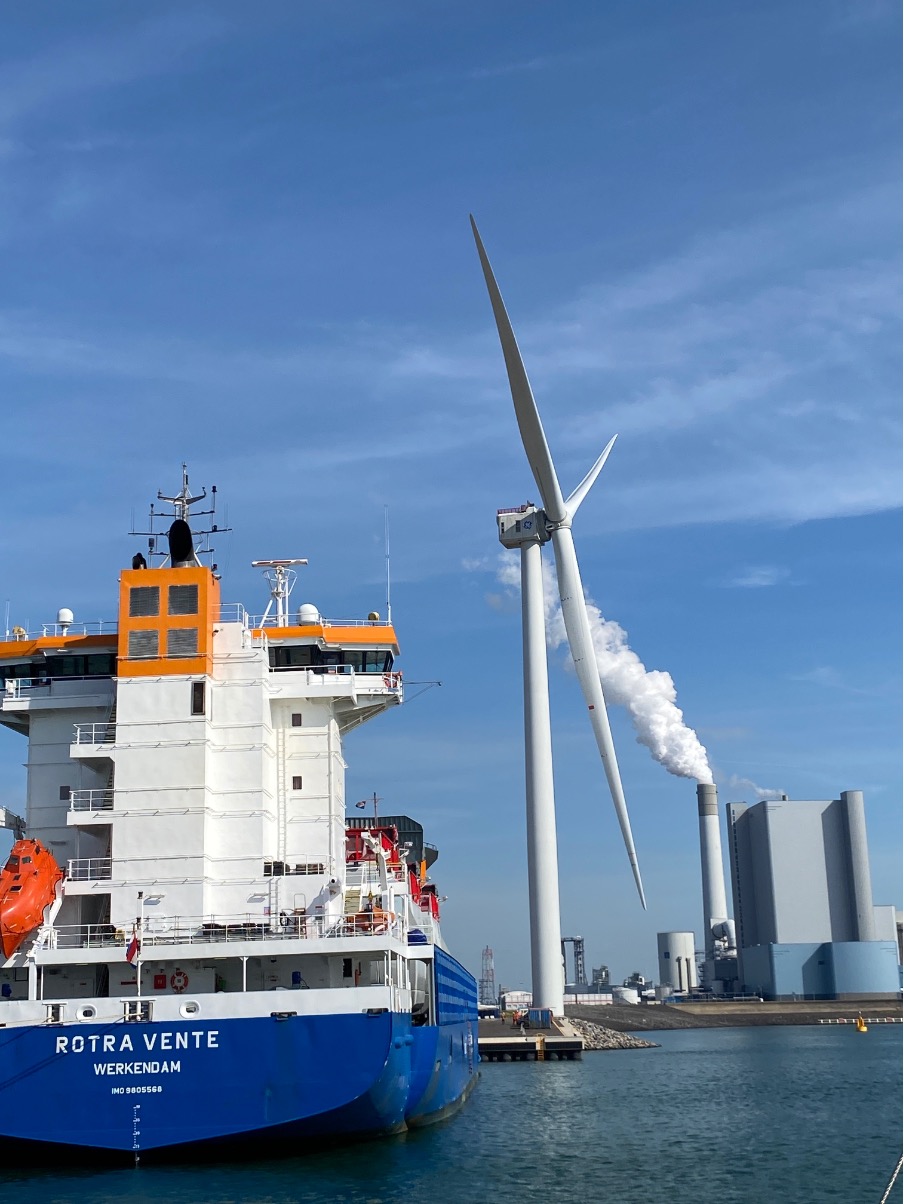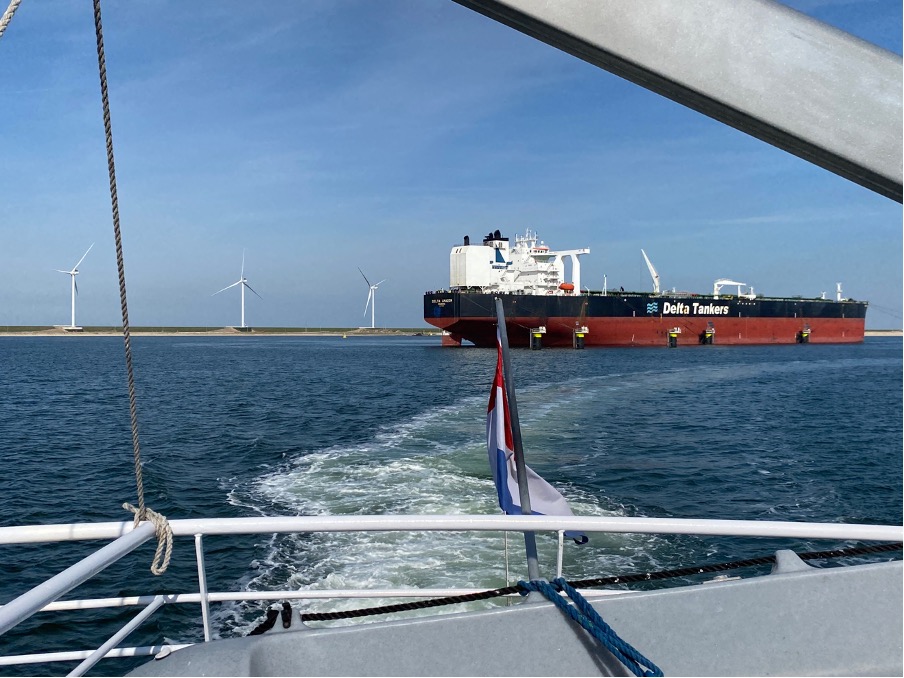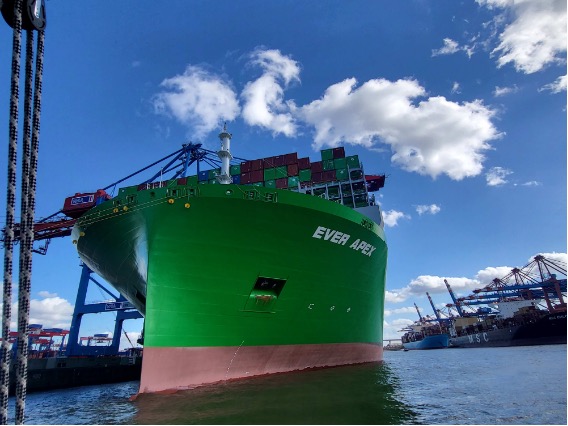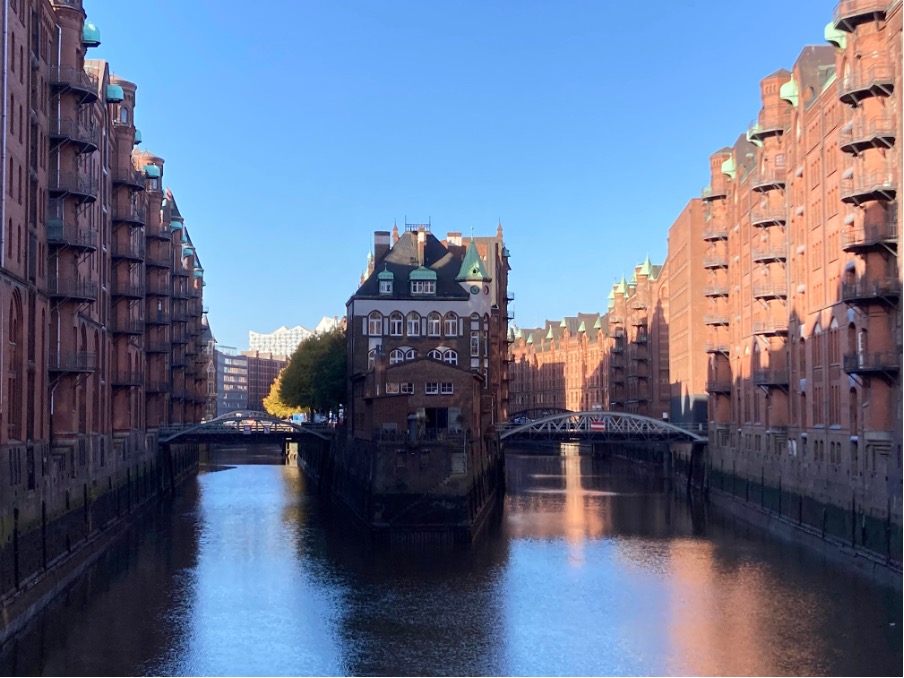Rotterdam – report by Elizabeth A. Sibilia
I recently traveled to Rotterdam for the inaugural Ship Recycling Innovation Lab held by the NGO Shipbreaking Platform at the Kunsthal Rotterdam, I had also planned to meet up with my Rotterdam based PORTS colleague Dr. Vinzenz Baumer Escobar to discuss what we are learning and observing in, and from, our respective field sites–his being the port and port city of Rotterdam and my field site, the port and port city of Singapore. Vinzenz arranged for us to take the FutureLand Museum’s sponsored waterborne boat tour of the new terminals and industrial area at the Port of Rotterdam’s MAASVLAKTE 2, an extension of reclaimed land into the North Sea. This massive infrastructural project adds 2k hectares to the Port of Rotterdam’s portfolio of maritime activities and has been financed in-large part by the European Investment Bank. MAASVLAKTE 2 currently leases terminals for container cargo, transshipment, and offshore activities.
On the tour, and later that day, we compared notes regarding the massive undertaking of port expansion via land reclamation projects at both our field sites, as well as the co-constitutive relationship the port economy has with urban (re)development. But what I found most interesting from our drive out to FutureLand was the extensive energy landscape that led to the new port extension. This was a very different geography than the islands that characterize Singapore’s energy landscape. Later that day I learned from the port literature that this agglomerative economy is the largest industrial cluster in Europe hosting dozens of chemical companies, oil refineries and coal-fired power plants. What emerged from conversations with Vinzenz throughout the day was how both ports have become entangled in nationally scaled energy plans and proposals. The port’s new land reclamation projects are materializing exponential trade growth alongside a large-scale energy transition in a new kind of ‘port-scape’- a term I am using to describe the land/sea relationship of these two mega-ports. Besides the offshore wind turbine terminals at MAASVLAKTE 2, another example of this energy-maritime entanglement can be understood in the recently signed Memorandum of Understanding (MOU) between the two ports that establish a “green and digital corridor”. Following a policy proposal for a green shipping corridor devised at COP26 by the Clydebank Declaration (comprising 24 member states), the recent MOU proposes to establish a new trade geography characterized by lower or zero carbon emissions met by a supply chain supporting the first sustainable ships. The MOU will produce the world’s longest green shipping corridor by 2027, between two of the world’s largest ports.

(In this photo, taken by Elizabeth Sibilia, one observes the recently constructed coal plant in the background, in the middle ground is a constructed windmill, and the foreground is a view of a docked vessel. The photo was taken from the Futureland tour at MAASVLAKTE 2.)
MAASVLAKTE 2 built further into the North Sea and Singapore’s TUAS ‘mega’ Port built further out into the Singapore Strait exemplify exponential economic growth while reflecting an unsustainable growth paradigm. Upon my return to Singapore, I am inspired to consider this future nature and research ‘green’ and digital geographies of trade, and the energy landscapes powered by international capital and a greener global discourse. We ended our time at the terminals with a visit to the FutureLand Museum, a small yet helpful introduction to a visiting public to the workings of the port and the scale at which they happen.

This photo, taken by Elizabeth Sibilia, reveals a series of windmills located on the outer area of reclaimed land at MAASVLAKTE 2, and an oil tanker anchored in port.
Hamburg - report by Hege Høyer Leivestad
In early October 2022, I met up with Elisabeth Schober met in Hamburg, where Elisabeth is currently doing fieldwork. The aim of the visit was to collaboratively explore the urban waterfront of one of Europe’s most important port cities, and to discuss and compare notes on port development.
On Thursday 6 October we conducted a two and a half hours long boat trip on die Elbe, one of the major rivers of Central Europe, to observe port infrastructure, container terminals and maritime traffic. Guided boat-trips on die Elbe form a central part of Hamburg’s tourism landscape, which relies heavily on the city’s powerful maritime past and present. The fact that port operations are still conducted in immediate closeness to the city center is perhaps one of the most defining characteristics of Hamburg’s urban environment. The organised trips on die Elbe also offer a unique possibility to get up close to some of the world’s largest ships as they are operated in one of Hamburg’s four container terminals. During our early-October visit we were lucky to observe close-up the world’s second largest containership Everegreen’s Ever Apex, a 24 0000 TEU containership which was built in 2022 and that sails under Singaporean flag, as it was operated in the Buchardkai terminal.

Ever Apex at Burchardkai, Hamburg, in early October 2022, photo by Elisabeth Schober.
Thursday 7 October was dedicated to a downtown walk-and-talk, discussing Elisabeth’s current fieldwork and research topic, as well as comparing port development in Hamburg and the Port of Algeciras where I have done extensive work. We visited the historical Speicherstadt area, the old warehouse district, which is now a UNESCO world heritage site, before moving on to the HafenCity to observe the wider ramification of waterfront development. A major urban regeneration attempt transforming Hamburg’s old freeport area into residential areas, hotels and office buildings, HafenCity is one of the largest urban redevelopment projects in Europe. In HafenCity you can now cross the Busanbrücke (Pusan Bridge), or walk along,Shanghaiallee, as a reminder of the historical and contemporary global maritime connections that our PORTS project attempts to tackle.

Speicherstadt, Hamburg, one of the largest pre-container warehousing complexes in the world, photo by Hege Leivestad.
